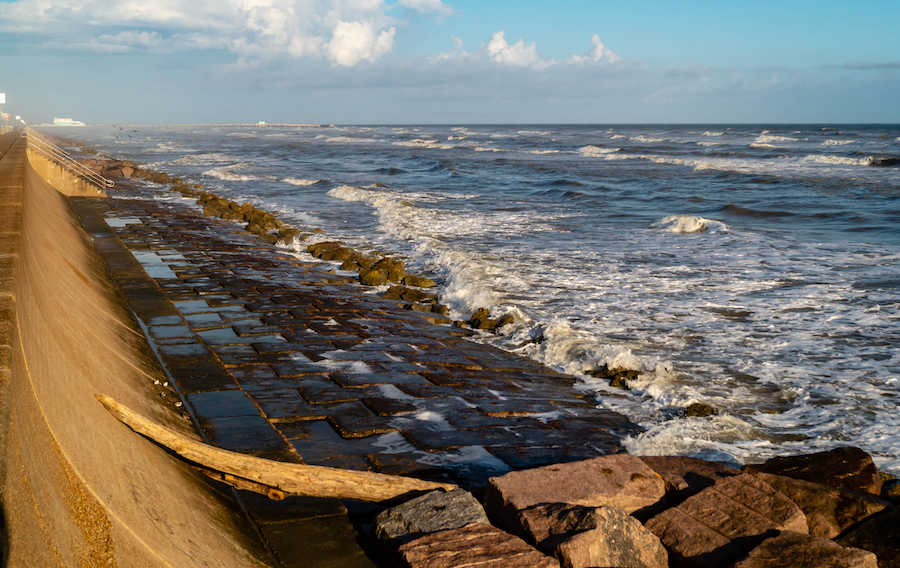The 6-Second Trick For Shore Protect Team
Table of Contents8 Easy Facts About Shore Protect Team ShownMore About Shore Protect TeamThe smart Trick of Shore Protect Team That Nobody is DiscussingShore Protect Team Fundamentals ExplainedThe 25-Second Trick For Shore Protect TeamSome Of Shore Protect TeamThe Buzz on Shore Protect Team
Decrease in property worth: As the area tourism is impacted by erosion, so after that is the economy. Customers are less most likely to search for a coastline house that can be ruined at any minute by the upcoming flooding and erosion emergency. Consequently, property value can go down immensely and impact the whole region.Whether a coastline is simply little and crowded or has to close totally for the security of the community and close-by residential properties, this substantially influences tourism. Consequently, regional economic situations are affected (https://smartseolink.org/details.php?id=416591). Risk of injury: The raised risk of flooding and architectural failures triggers an enhanced threat of injury to nearby tourists and area participants

Coastline stabilization is directly related to their job. Waterfront resorts: Because coastline disintegration effects tourist, it affects the success of waterside hotels.
9 Easy Facts About Shore Protect Team Explained
Coastal commercial services: No vacationers implies no company. Coastal state parks: State parks that exist along coasts are at danger of damages.
Soft stablizing is a much better solution for the atmosphere and even more sustainable overall. Difficult stabilization makes use of synthetic structures as protection to control erosion. Usually, these structures are installed at best angles or alongside quit sand movement and minimize the force of waves. The majority of types of difficult stabilization like seawalls and sheet metal are not perfect for coastline stablizing.
The smart Trick of Shore Protect Team That Nobody is Talking About
There's also not adequate evidence of their effectiveness depending on the type of shoreline and neighborhood conditions. Hard stablizing techniques often tend to be much more tough to set up and don't match the all-natural visual, protruding like a sore thumb and harming neighborhood ecological communities in numerous scenarios. Coastline nutrition is the process of including lost sand and debris back to coastlines after disintegration has happened.
TrapBags help in the process of beach nutrition by safeguarding natural environments and permitting plants to expand. While this procedure can be costly and is not long-term, the pros tend to exceed the cons. TrapBag obstacles deal several residential or commercial properties that make them excellent for coastal and riverbank erosion defense. They're: Eco-friendly: You can make use of native dirt both to surround and to fill the TrapBags.

The Greatest Guide To Shore Protect Team
They can also be mounted without any type of heavy machinery. Affordable: TrapBags are excellent for both small and large locations of coastline.
Combined with a high building cost, this has led to raising usage of various other soft design seaside management choices such as coastline replenishment. Seawalls are created from different materials, many frequently enhanced concrete, boulders, steel, or gabions. Other feasible building and construction products consist of plastic, wood, light weight aluminum, fiberglass composite, and biodegradable sandbags constructed from jute and coir. The ideal seawall design depends on location-specific facets, including bordering disintegration procedures. There are 3 main sorts of seawalls: upright, bent, tipped, and mounds (see table listed below). A record published by the United Nations Atmosphere Program (UNEP) suggests that the tsunami of 26 December 2004 custom bulkhead designs caused much less damage in the areas where all-natural barriers existed, such as mangroves, reef or coastal vegetation.
Natural barriers, such as reef and mangrove woodlands, prevent the spread of tsunamis and the circulation of coastal waters and mitigated the flood and surge of water. A cost-benefit technique is a reliable means to determine whether a seawall is suitable and whether the advantages deserve the cost.
Some Known Questions About Shore Protect Team.
A seawall is a static feature which can conflict with the dynamic nature of the coastline and impede the exchange of debris between land and sea. Benefits and drawbacks of seawalls according to Short (1999) Advantages Disadvantages Long term remedy in comparison to soft beach nutrients (https://www.bedirectory.com/Shore-Protect-Team_425183.html).

This can cause coastlines to dissipate, providing them ineffective for coastline goers. Usually, seawalls can be a successful means to regulate coastal erosion, yet only if they are created well and out of materials that can withstand the force of continuous wave power. Some understanding is required of the coastal processes and morphodynamics certain to the seawall place.
The Best Strategy To Use For Shore Protect Team
The proper seawall layout depends on location-specific facets, consisting of bordering erosion processes. There are three primary types of seawalls: vertical, curved, stepped, and mounds (see table listed below).
Natural barriers, such as coral reefs and mangrove forests, prevent the spread of tsunamis and the circulation of seaside waters and reduced the flood and rise of water. A cost-benefit approach is an effective way to figure out whether a seawall is proper and whether the benefits deserve the cost.
9 Easy Facts About Shore Protect Team Described
A seawall is a fixed function which can conflict with the vibrant nature of the shore and restrain the exchange of sediment in between land and sea. The table listed below summarizes some favorable and negative impacts of seawalls which can be made use of when comparing their effectiveness with other coastal management choices, such as coastline nutrition. [] Benefits and drawbacks of seawalls according to Short (1999) Advantages Drawbacks Long-term option in contrast to soft coastline nutrients. permitting for bulkheads.

This can create beaches to dissipate, providing them ineffective for beach goers. Generally, seawalls can be a successful means to control seaside erosion, but only if they are constructed well and out of materials that can endure the pressure of continuous wave power.